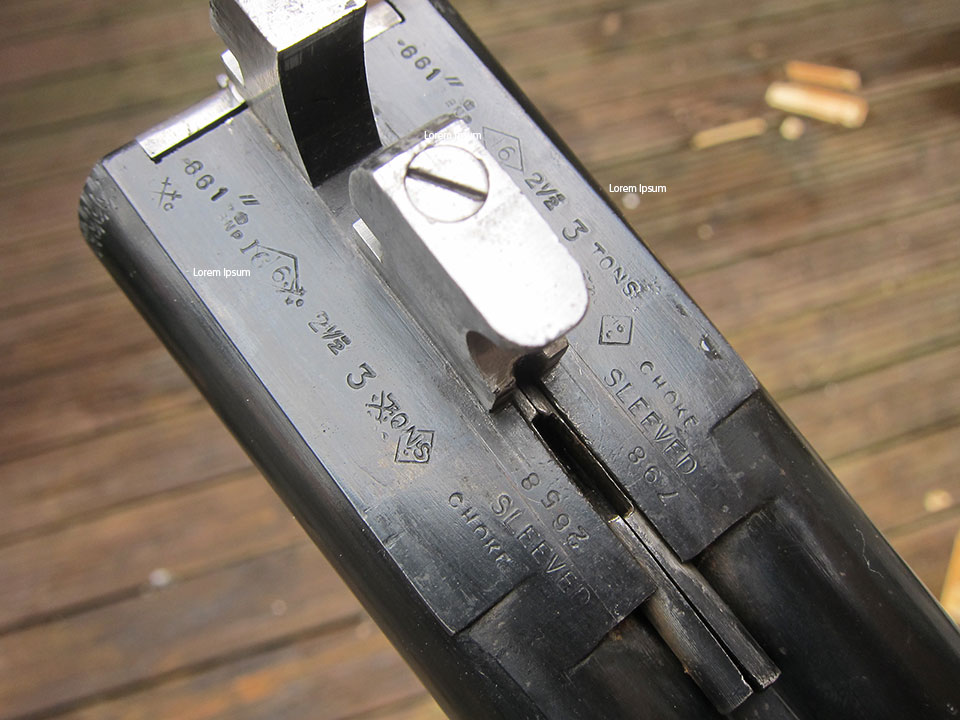Sleeving is a process by which the barrels are cut-off about four inches from the breech and new tubes welded into the chambers. Either the old ribs are re-laid or new ribs laid and the barrels then finished as normal.
Sleeved barrels have to be re-proofed and stamped ‘SLEEVED’ on each tube. This is a legal requirement. Sleeved guns will usually show the old proof marks as well as the re-proof marks from the time the gun was sleeved and presented for re-proof.
The gun illustrated is a Smallwood 16-bore with steel barrels.

The proof marks visible are:
3 TONS - The absence of the square” shows it was proofed after 1984.
SLEEVED - indicates barrels have been sleeved.
2 1/2” - Chamber size introduced in 1925, discontinued in 1989.
16 in a diamond - Introduced 1887, discontinued in 1989
.661” - metric bore size optional from 1954, mandatory from 1989.
CHOKE - indicates choked muzzles, introduced in 1887, discontinued 1954.
BNP _ Birmingham Nitro Proof stamp introduced in 1954
Unfortunately, the Birmingham date stamp is only partly visible - the ‘C’ showing but not the other letter.
BPC in crossed swords (partly obscured) is a Birmingham Proof Mark discontinued in 1904.
We can deduce (even though some of the proof marks have been obscured) the gun was originally proofed in Birmingham under the 1904 Rules of Proof, then sleeved and re-submitted for proof between 1984 and 1989.
Published by Vintage Guns Ltd on



